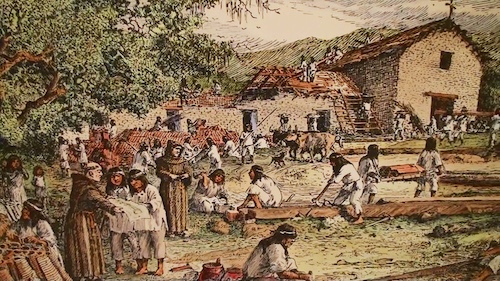In 1492, Spain started exploring and colonizing new places in the Americas. Spain wanted to spread Christianity by sending missionaries to convert Indigenous people to their religion. But the missions were also used to make the land peaceful so Spain could find and take valuable natural resources like gold, silver, copper, salt, and wood. These resources could be used to make money for the Spanish kingdom.
The missions were run by both the Catholic Church and the Spanish government, which worked closely together. The Spanish king chose where missions would be built and gave money to support them. The missionaries worked to convert Indigenous people, while the government used the missions to control the land and collect resources. Indigenous people who joined the missions became wards of the state, meaning the government looked after them, but they were not full citizens.

Spanish missions were built in places like Florida, New Mexico, Texas, Arizona, and California. Missionaries focused on Indigenous groups who farmed and lived in villages, while avoiding tribes known for being strong warriors. Since missions were often far from Spanish towns, soldiers protected the missionaries and helped keep order. Many Indigenous people resisted the missions because they did not want to lose their own culture or land. Some missionaries stayed longer than planned to continue converting people.
These missions left a big mark on history. They brought Christianity and Spanish culture to many Indigenous groups, which changed their traditions and ways of life. Some Indigenous people mixed their own beliefs with Christianity, while others rejected the missions. The missions show how Spain’s goals of spreading religion, controlling land, and gaining riches all worked together during colonization. Today, the missions help us understand how colonization changed the Americas.
